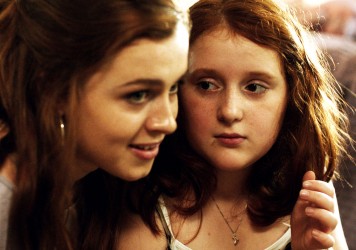
Asif Kapadia’s melodramatic portrait of the late jazz singer fails to hit all the right notes.
The title suggests an intimate portrayal of a mega star. Amy Winehouse died an unnatural death aged 27 and is shrouded in a mythological mist. To call a film simply by her first name suggests a focus on her truest outline. No more romanticised tragedy, no more exaggerated sorrow, no more fixation on sex and drugs and jazz and soul. For a heightened dramatisation of her life, you need only have read the newspapers during the last five years of her life. How ready fans of her music are for an antidote.
Disappointingly, puffed-up melodrama is something that Asif Kapadia – despite his immense storytelling skill – adds to rather than pierces with his engrossing but somewhat pointless exercise in retracing the high and lowlights of a public figure already bogged down in hyperbolic projections. As with Kapadia’s wildly successful previous doc, Senna, Amy benefits from the production’s wealth of access. Present are everything from inside source stuff – voicemail messages and handwritten lyrics – to songs, performances, video footage, tabloid photos, basically, all the fat sucked from the body of a woman who came to know no privacy.
The documentary starts with home video footage of Amy aged 14, mucking around with mates on the staircase of a north London house. Her voice is as full as her face. Her face is different to the one the world came to know. Bulimia was a compulsion as damaging to her as heroin, crack and alcohol addictions. In unearthing and pursuing this fact of her life, Kapadia’s documentary does its best work.
The rest feels like opportunistic storytelling. The team had access to oceans of raw data, a result of “two-and-a-half years of forensic research,” according to producer, James Gay-Rees. In other hands this material would be a slurry of nonsense. Instead it is buoyed by sharp focus and consistent momentum. But what exactly was being forensically researched? Not Amy’s interior life. The film delights in writing out the most ominous of her lyrics in flowery subtitles, but is only interested in her troubles insofar as they provide connective tissue to the next dastardly event or person. She is the energy source from which a melodrama can be powered into life.
The film takes a dim view of the paparazzi that staked out her home and of her father, Mitch, who brought a camera crew to her St Lucian bolthole to film his Channel 4 show, My Daughter Amy. The message is: look at the buzzards that surrounded this poor woman. And yet it uses the material served by these forces to inform a sophisticated retelling of the same old irresistible plot points. Rather than trying to tunnel inward, past music industry exploitation, family negligence, drug addiction and romantic trauma, the doc bounces off these ghoulish pivots. The portrayal of Amy Winehouse herself is almost the negative space in between the forces around her: a victim that holds their imprints rather than anyone deeper and more autonomous.
Blake Fielder-Civil, the love of Amy’s life and the man who first offered her heroin is an easy person to villainise. This film artfully obliges, using footage of him boasting about being a jack the lad that paves the way to darker insinuations. A drug expert suggests that he may have wanted to keep Amy addicted to crack and heroin as she – now a rich star – enabled his access to substances. No one’s saying that there was no murkiness to their relationship. Documentary evidence exists of his flaws. But it is a disservice to Amy who loved Blake, deeply and poetically, to simply caricature him. The film’s disinterest in the powerful emotions that shaped Amy’s choices is telling. Kapadia has his own narrative agenda and it is not determined by his subject’s emotional landscape.
The gap between gawker and gawked at closes down when Amy sings, when her brutal humour is captured and when her love of original music comes out, in words, in performances or in interactions with her heroes. If only this film hadn’t been so desperate to shoehorn in all the drama and had taken on a smaller or more esoteric slice of her life, we might have come away with a more intimate portrait that merited such a familiar title.
Published 16 May 2015

The iconic American singer-songwriter gets a fitting tribute from doc heavyweights Amy Berg and Alex Gibney.

Anorexia as seen from all vantages within the nuclear family is the subject of this impressive drama.

Senna may well have been a victim of F1’s politics, but it’s also clear that he played those games as well as anybody.